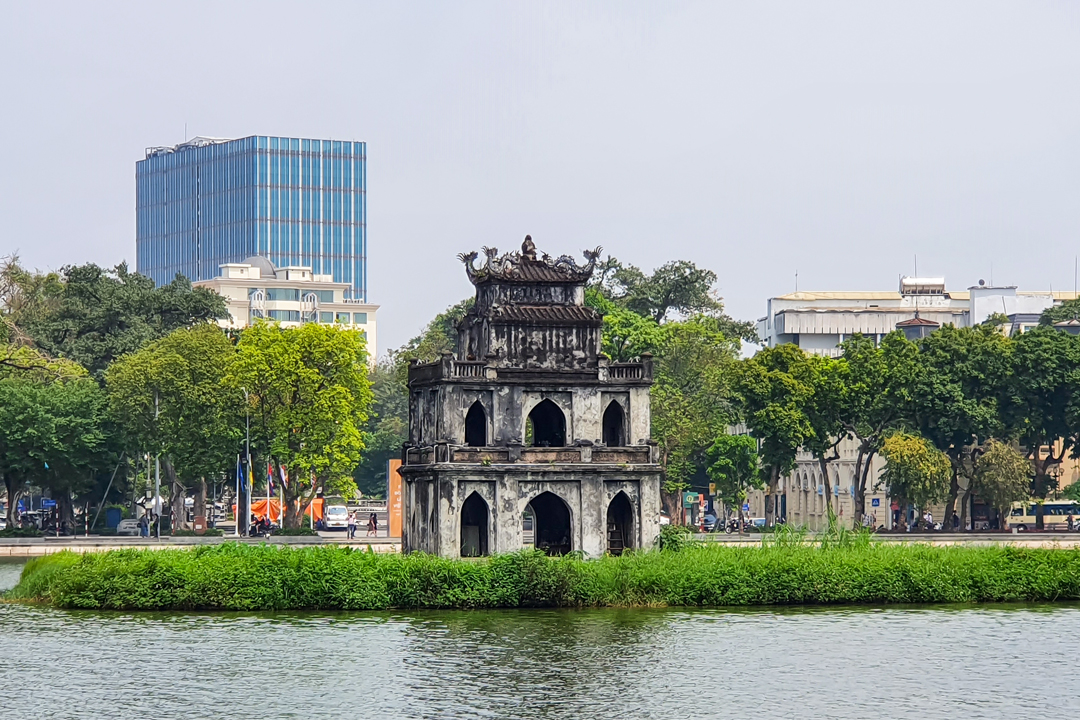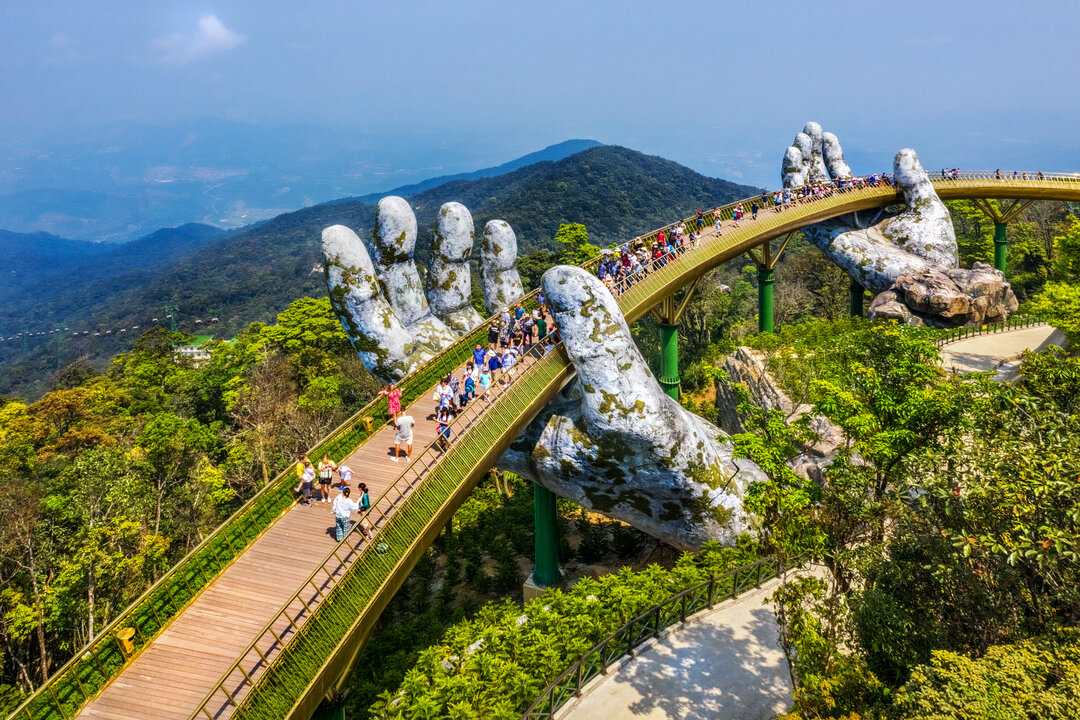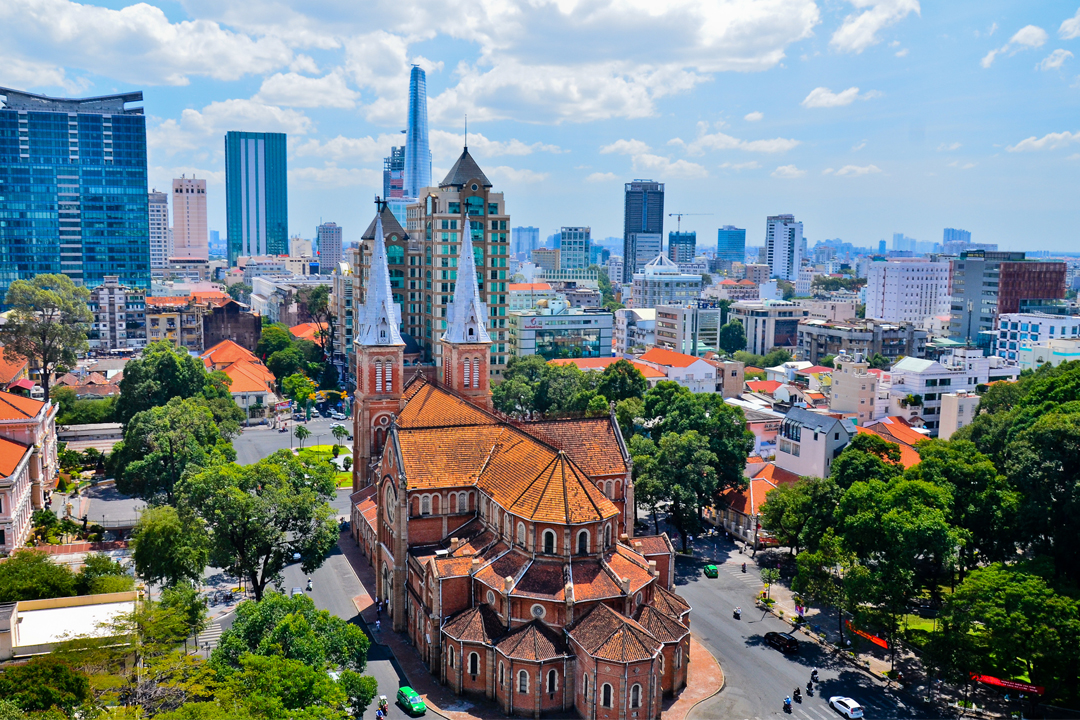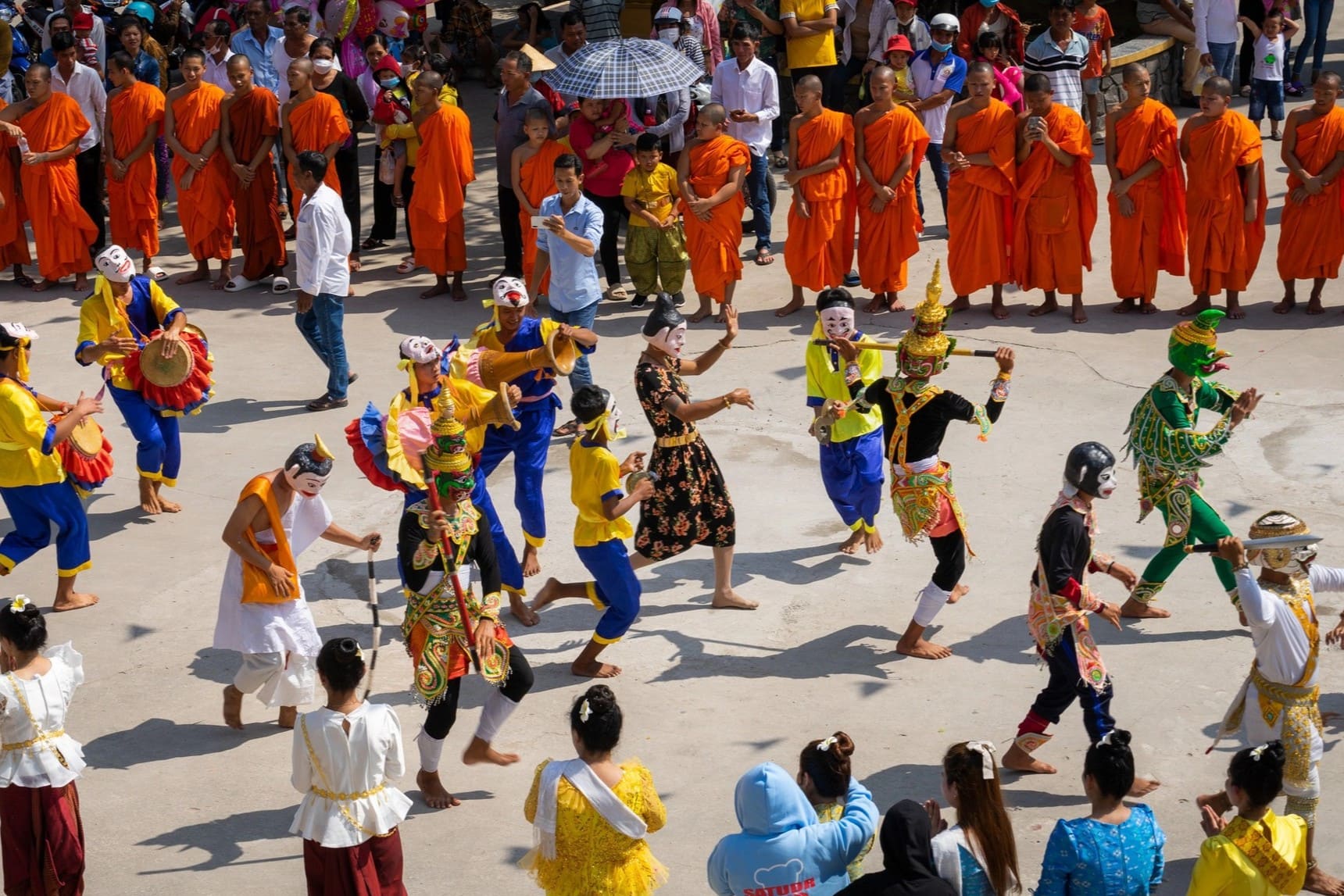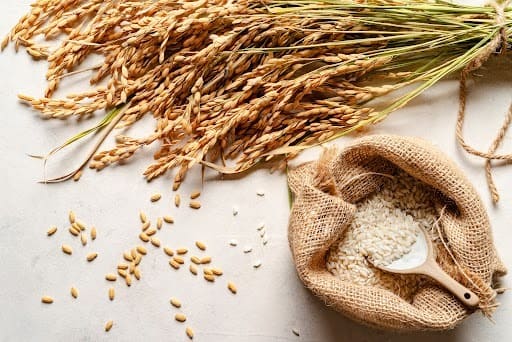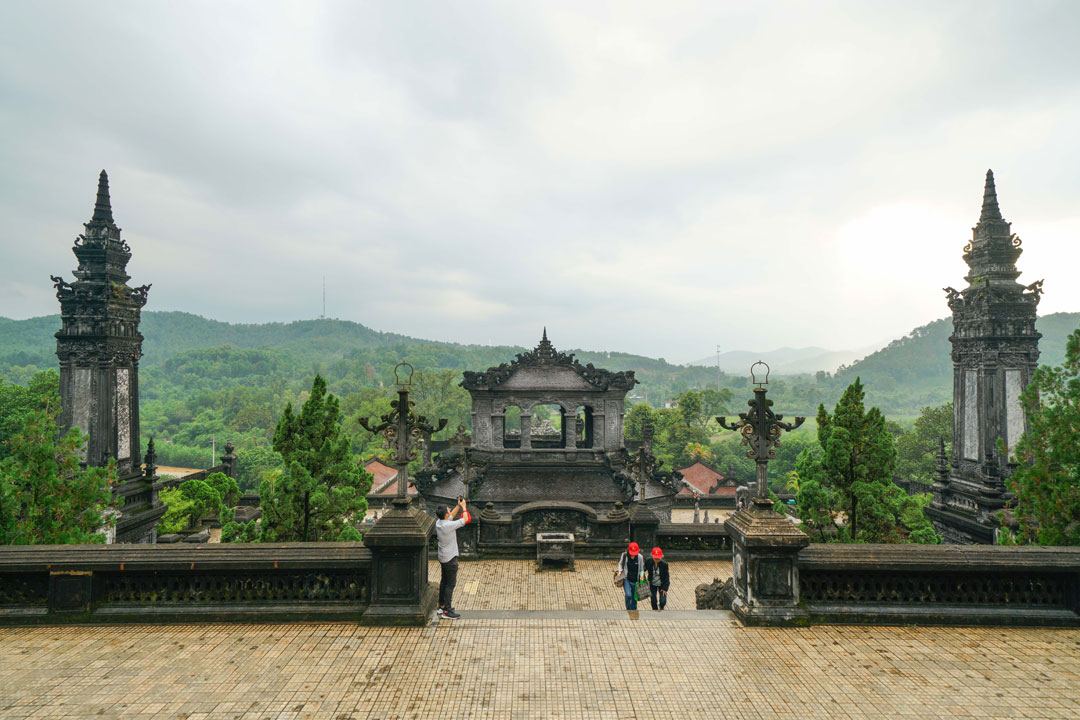Khai Dinh Tomb: History, Architecture & Travel Guide
Khai Dinh Tomb, an imperial mausoleum in Hue, stands as a testament to the fusion of Vietnamese tradition and Western influences. Constructed during the early 20th century, it reflects the reign of Emperor Khai Dinh, showcasing a striking departure from the architectural styles of previous Nguyen dynasty royal tombs. This historic site intrigues toursits with its intricate details, French-influenced designs, and elaborate ornamentation, setting it apart from other royal tombs of Vietnam.
In this guide, GTrip explores the history and significance of Khai Dinh Tomb, shedding light on how Emperor Khai Dinh’s vision shaped this unique structure. You’ll gain insights into its distinct architectural style, where elements from Vietnam, China, and Europe intertwine to create an awe-inspiring masterpiece. From the opulent interiors of Thien Dinh Palace to the dragon stairway leading to the main shrine, every corner of this tomb narrates a story of power, luxury, and artistic brilliance.
We’ll help you determine the best time to visit Khai Dinh Tomb, ensuring you experience it in ideal weather conditions while avoiding the crowds. You’ll also find a detailed travel guide on how to reach the site, covering transportation options from Hue city center, including taxis, motorbikes, and guided tours. Additionally, we provide the latest entrance fees and opening hours so you can plan your itinerary efficiently.
Beyond Khai Dinh Tomb, Hue is home to numerous cultural and historical attractions. We recommend exploring other imperial tombs in Hue, such as Minh Mang’s serene resting place or the iconic Thien Mu Pagoda, if you have time. Our guide also includes essential travel tips, covering respectful dress codes and local customs.
History and significance of Khai Dinh Tomb
Khai Dinh Tomb, also known as Ung Lang, stands as a distinctive imperial mausoleum in Hue, encapsulating the transition between traditional Vietnamese aesthetics and Western influences. Constructed for Emperor Khai Dinh, the tomb reflects his reign’s shift towards modernization while still honoring the grandeur of the Nguyen dynasty mausoleum tradition.
Unlike previous royal tombs of Vietnam, which emphasized expansive gardens and natural harmony, Khai Dinh Tomb adopts a more compact yet intricate design. This approach mirrors the emperor’s admiration for European architecture, which he encountered during his travels. According to historical records, Ung Lang was personally selected by Emperor Khai Dinh, with construction beginning in 1920. After his passing and burial in 1925, the construction continued until its completion in 1931. It was built using iron, steel, cement, and French encaustic tiles, along with porcelain and glass from China and Japan.
Positioned on Chau Chu Mountain, Khai Dinh Tomb's location was strategically chosen for its auspicious feng shui alignment, believed to bring prosperity in the afterlife. The site’s elevated position offers a commanding view of the Perfume River and the surrounding landscapes, reinforcing its symbolic power. The tomb’s elaborate construction, marked by a blend of Nguyen dynasty royal tomb traditions and modern embellishments, showcases the emperor’s desire to leave behind a lasting legacy.
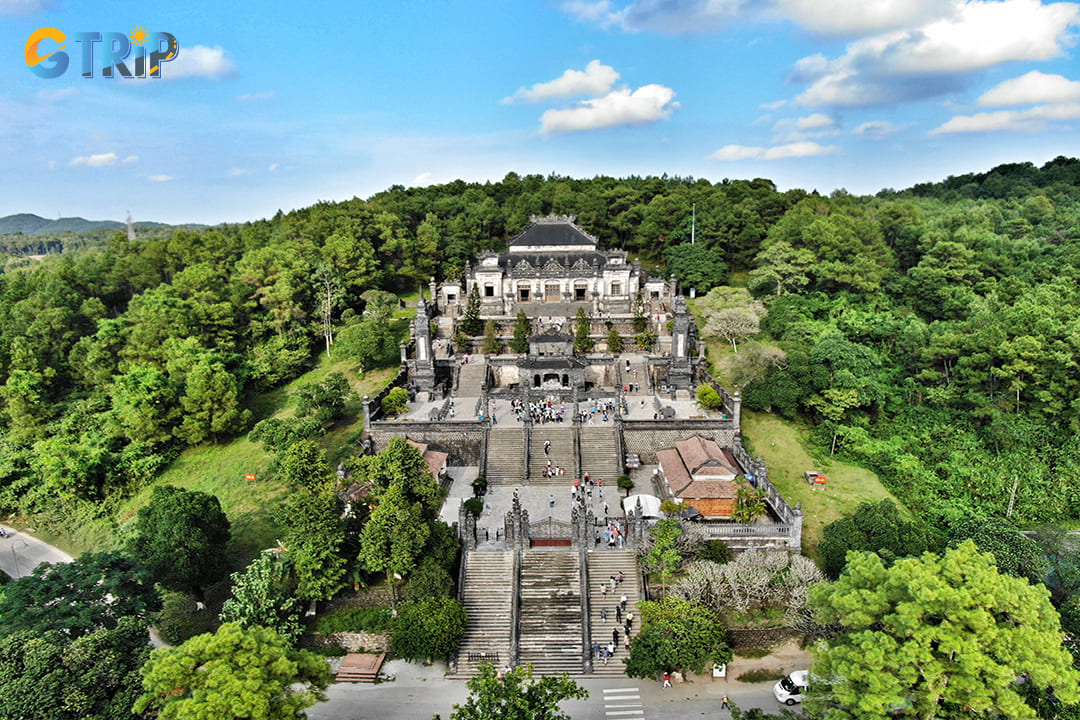
Khai Dinh Tomb's location was strategically chosen for its auspicious feng shui alignment, believed to bring prosperity in the afterlife
Today, people exploring the tomb can witness its grandeur firsthand, from the imposing stone statues lining the courtyard to the exquisite mosaics adorning the interior chambers. These intricate details highlight the craftsmanship that defines Khai Dinh Tomb history, making it an essential stop for those seeking to understand Vietnam’s imperial past.
Beyond its historical importance, the tomb’s remarkable design sets the stage for its architectural exploration. The fusion elements not only distinguish it from its predecessors but also make it a unique cultural artifact. This leads naturally to an in-depth examination of the architectural style of Khai Dinh Tomb, where the interplay of artistic influences is brought to life.
Architectural style of Khai Dinh Tomb
Khai Dinh Tomb architecture stands apart from other imperial tombs in Vietnam due to its striking fusion of Vietnamese, Chinese, and French design elements. Unlike the traditional architecture of earlier Nguyen dynasty mausoleums, this tomb reflects Emperor Khai Dinh’s preference for modern influences, blending Eastern symbolism with European aesthetics.
Upon arrival, tourists are greeted by the Dragon Stairway, an impressive entrance featuring meticulously sculpted dragon motifs winding along the staircases. These dragons, symbols of imperial power, lead up to the main structure, showcasing a mix of concrete construction and intricate details inspired by French Baroque and Rococo styles. The use of reinforced concrete, rather than the traditional wooden structures of previous tombs, marks a significant departure from classic Vietnamese architecture.
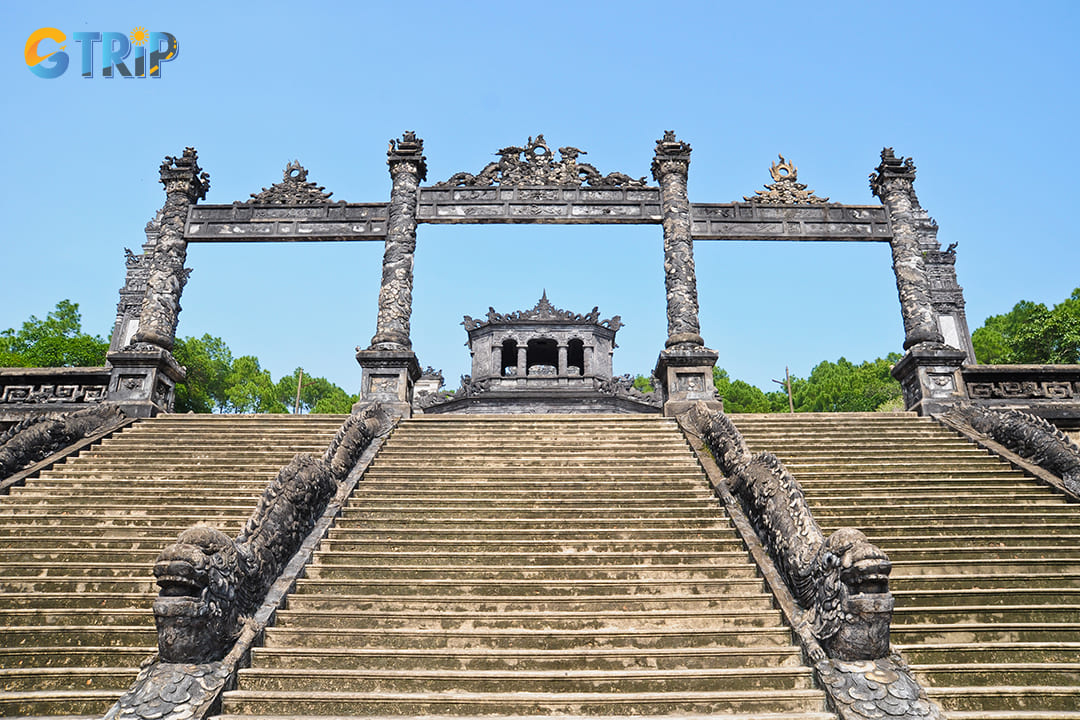
Tourists are greeted by the Dragon stairway, an impressive entrance featuring meticulously sculpted dragon motifs winding along the staircases
The grandeur continues inside the Khai Dinh Tomb interior, particularly in Thien Dinh Palace, the tomb’s central hall. This opulent chamber is adorned with elaborate ceramic and glass mosaics, demonstrating extraordinary craftsmanship. The ceiling features the renowned Thien Dinh Palace murals, which depict nine celestial dragons, a rare and remarkable example of Vietnamese mural art. The intricate patterns and colors reflect a harmonious blend of Vietnamese folk traditions and Western decorative techniques.
Throughout the tomb, European influences are evident in the use of stained glass, iron railings, and Gothic-style windows reminiscent of structures like the Hanoi Opera House. The combination of these elements gives the tomb an unparalleled aesthetic, making it a unique landmark among Nguyen dynasty royal tombs.
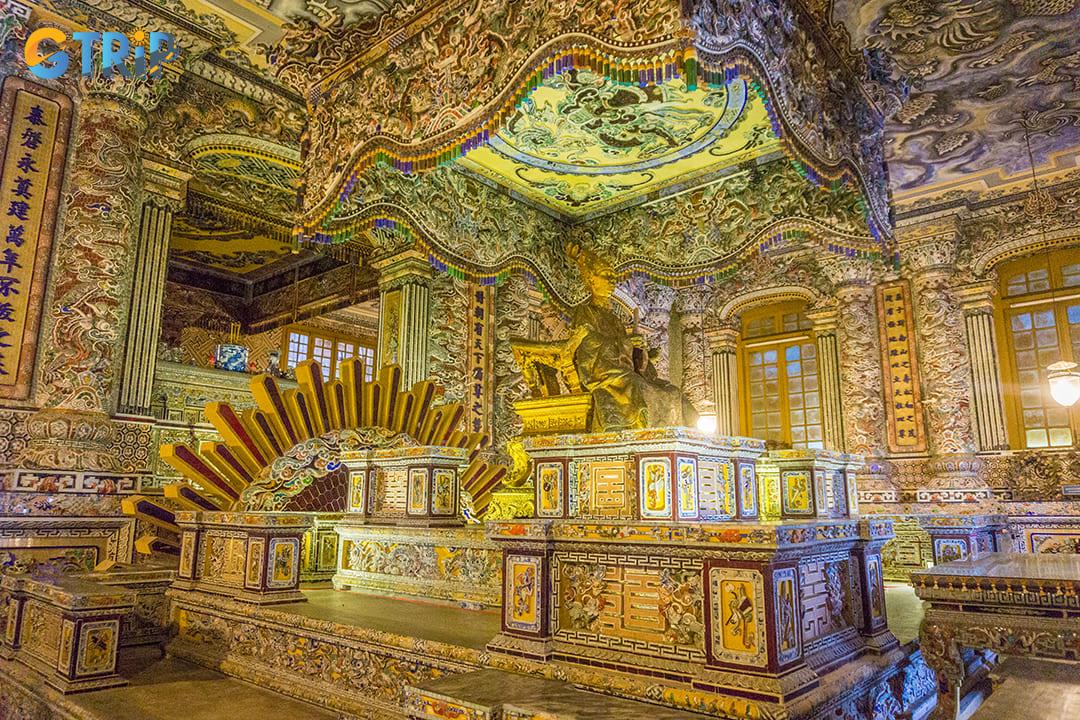
Khai Dinh Tomb architecture stands apart from other imperial tombs in Vietnam
4 things to do in Khai Dinh Tomb
Khai Dinh Tomb includes intricate mosaics, grand staircases, and panoramic views that capture Hue’s cultural richness. Below are five activities that should be on your list.
1. Admire Thien Dinh Palace’s ornate mosaics
Thien Dinh Palace stands as the centerpiece of Khai Dinh Tomb, renowned for its elaborate mosaics crafted from porcelain and glass. These vibrant artworks depict dragons, clouds, and traditional motifs, reflecting both Vietnamese craftsmanship and royal opulence. The walls are adorned with colorful ceramic shards arranged into intricate patterns that shimmer under natural light, creating a visually captivating effect. Each mosaic tells a story rooted in Vietnamese culture, symbolizing power, longevity, and spirituality.
Inside the palace, the ceiling features a breathtaking painting of nine dragons soaring through clouds, symbolizing the emperor’s divine connection to the heavens. The central hall houses the bronze statue of Emperor Khai Dinh, placed above his tomb. The combination of mosaics, sculptures, and decorative elements results in a space that feels both sacred and majestic.
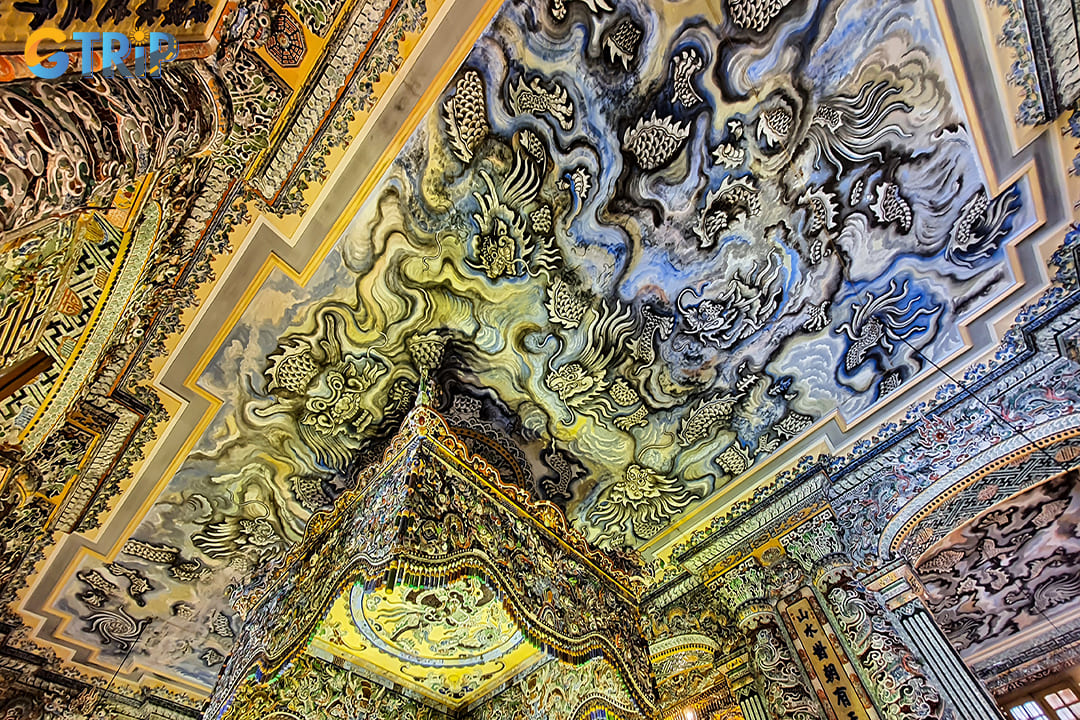
The ceiling features a breathtaking painting of nine dragons soaring through clouds
2. Walk up the dragon staircases to the main gate
Ascending the staircase guarded by stone dragons is a symbolic journey representing power and spirituality. The two dragons, meticulously carved with intricate scales and fierce expressions, coil along the balustrades, creating a sense of grandeur as you approach the tomb’s main gate. These dragons are not merely decorative, they embody the emperor’s authority and serve as protectors of his final resting place.
The staircase is divided into several levels, with each landing offering a slightly different perspective of the tomb’s architecture. As you climb higher, the symmetrical design of the stairs and surrounding structures become more apparent, making this pathway a favorite spot for photography. Morning light enhances the textures of stone and dragon carvings, while afternoon shadows add depth to your shots. Following Khai Dinh tomb guided tours often includes insights into the symbolic meaning behind each architectural element, enriching your appreciation of this impressive entrance.
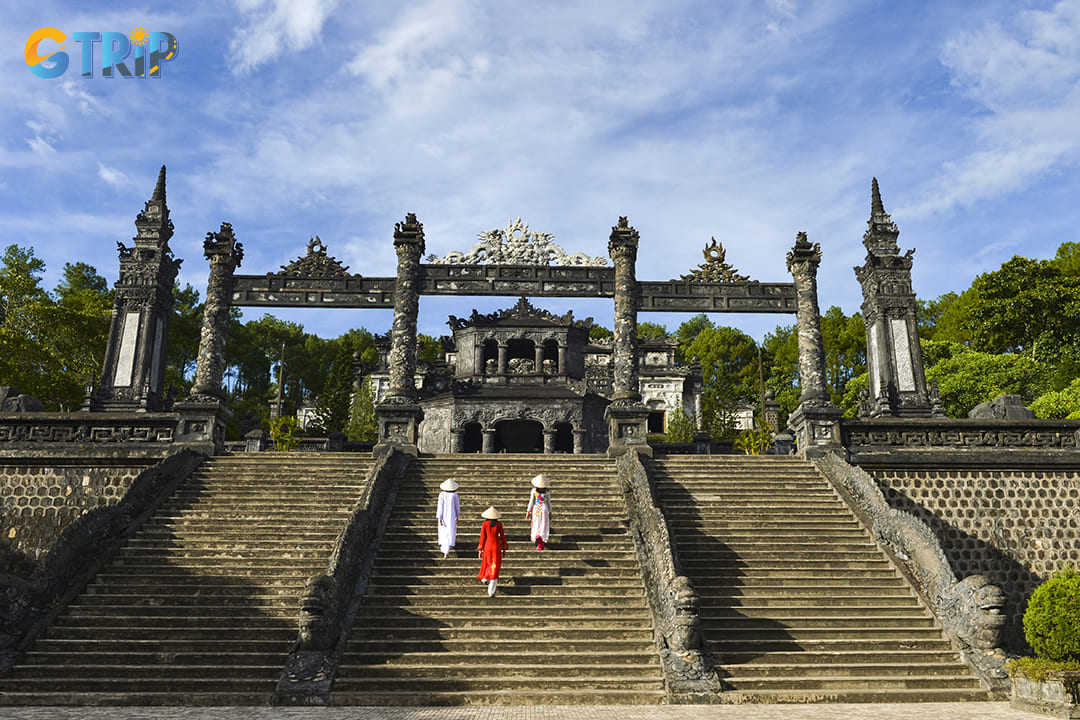
Ascending the staircase guarded by stone dragons is a symbolic journey representing power and spirituality
3. Explore the mandarin statues in the courtyard
The Honor Courtyard, situated directly in front of Thien Dinh Palace, features rows of life-sized stone statues representing mandarins, soldiers, and elephants. Each figure stands solemnly, symbolizing their eternal duty to guard and serve Emperor Khai Dinh in the afterlife. The mandarins, dressed in traditional court attire, represent the civil and military officials of the Nguyen Dynasty. The stone horses and elephants reflect the royal entourage that accompanied the emperor during his reign.
What makes these statues particularly fascinating is the attention to detail in their facial expressions and posture. Each face is carved with distinct features, suggesting that they may have been modeled after real individuals from the emperor’s court. The arrangement of the statues in symmetrical rows adds to the courtyard’s sense of order and reverence. This area is also a prime location for photographers seeking to capture both the statues and the tomb’s façade in a single frame. For a unique shot, position yourself at the courtyard’s far end to capture the statues, leading the viewer’s eye toward Thien Dinh Palace.
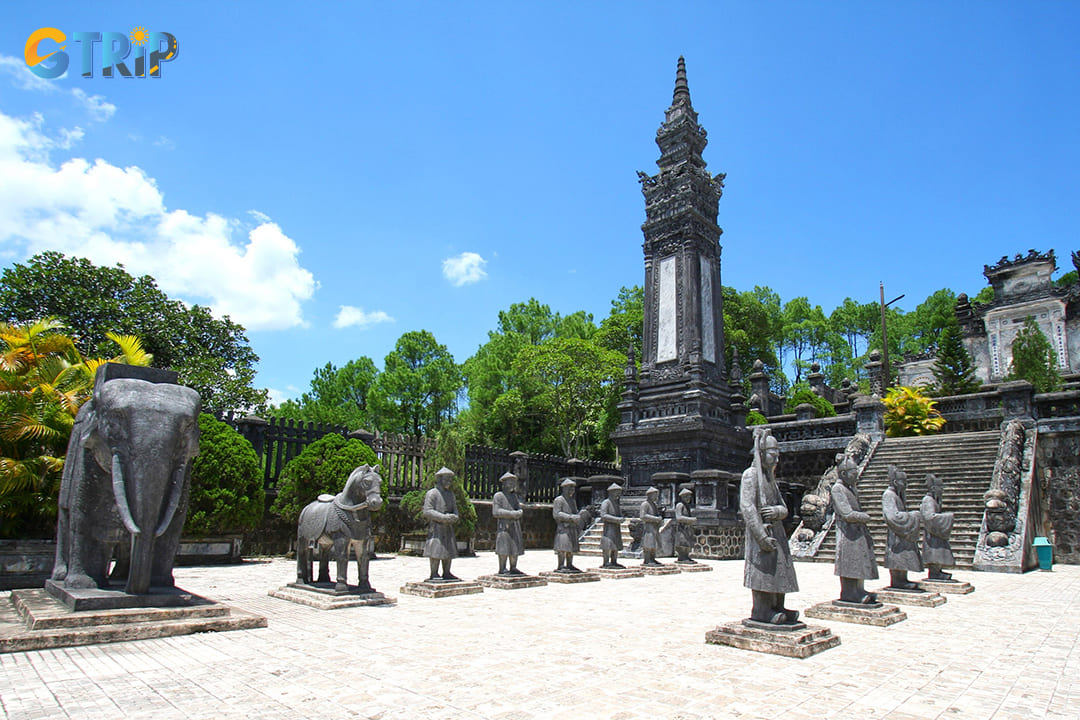
The Honor Courtyard features rows of life-sized stone statues representing mandarins, soldiers, and elephants
4. Capture breath-taking views of Hue’s landscape
At the highest level of the tomb, people are rewarded with sweeping views of Hue’s lush hills and the Perfume River winding through the valley. The elevated vantage point provides an excellent spot to capture wide-angle shots of the surrounding countryside, especially during sunrise or sunset. Photographers can use the tomb’s architectural elements, such as ornate railings and stone balustrades, to frame their shots, adding depth and perspective to their images.
This location is a favorite for photographers looking to capture the tranquil beauty of Hue, adding depth to their collection of Khai Dinh Tomb photography tips. On clear days, you can see as far as the distant mountains, while the surrounding pine trees provide a natural frame that enhances the composition of landscape shots. The contrast between the tomb’s dark stone and the vibrant greenery creates visually striking images that capture the essence of Hue’s cultural and natural beauty.
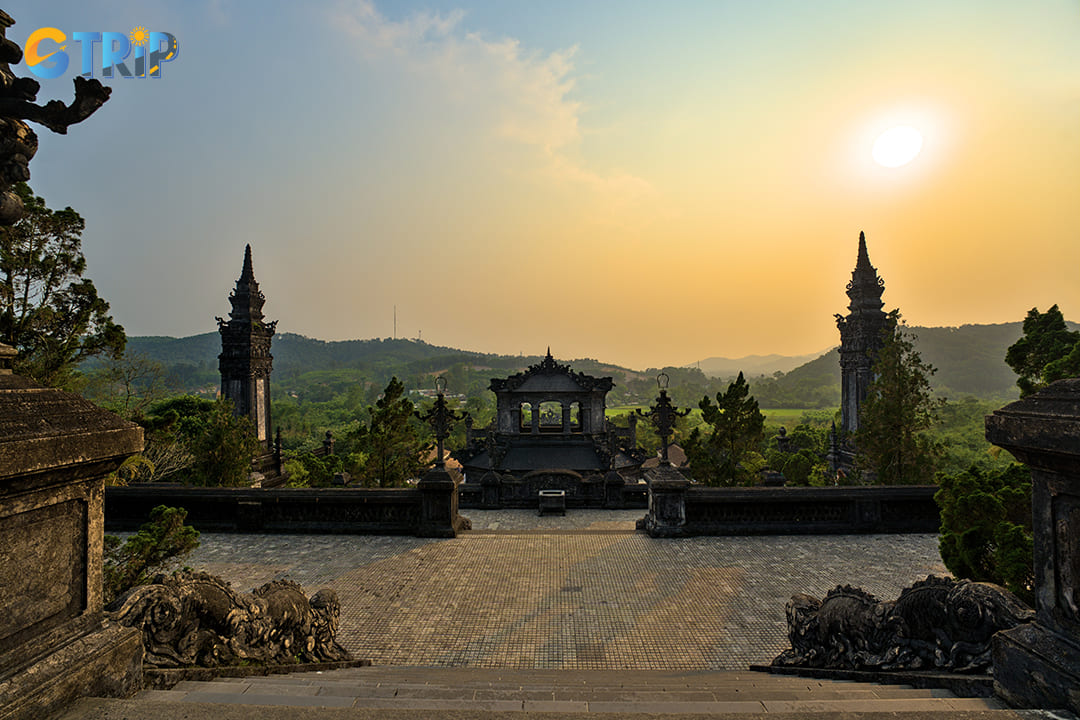
When in the sunset, the landscape is bathed in warm hues
Best time to visit Khai Dinh Tomb
The best time to visit Khai Dinh Tomb is during the cooler months from November to April, which allows for a more comfortable experience while exploring this unique historical site. These months offer favorable weather and also avoid the heat and humidity of the summer season, making it an ideal period for photography. If you’re looking to avoid crowds, plan your visit early in the morning or late in the afternoon, particularly on weekdays. This ensures you can enjoy the tomb’s intricate details, such as the French influence on Khai Dinh Tomb architecture and the elaborate murals inside the tomb, without the disruption.
Hue’s weather is generally mild, but Hue imperial tombs, including the Khai Dinh Tomb, can become more crowded during the peak tourist season in the summer. You can often find fewer crowds during the low season in the rainy months (May to October). However, it’s worth noting that while the rains can enhance the landscape’s lushness, they may also restrict your time outdoors. For those who love photography, the cooler months bring clear skies, ideal for capturing the beauty of the Khai Dinh Tomb photography spots. Early morning fog adds an ethereal charm to the surroundings, giving your photos a distinct look.
If you’re a photography enthusiast, you’ll want to aim for sunset, when the golden hour casts a warm glow over the tomb’s remarkable dragon stairway, Khai Dinh and the royal chamber. Additionally, the Khai Dinh Tomb’s unique blend of Vietnamese and Western influences is best admired during these calmer periods. It offers a tranquil atmosphere to reflect on the tomb's historical and cultural significance.
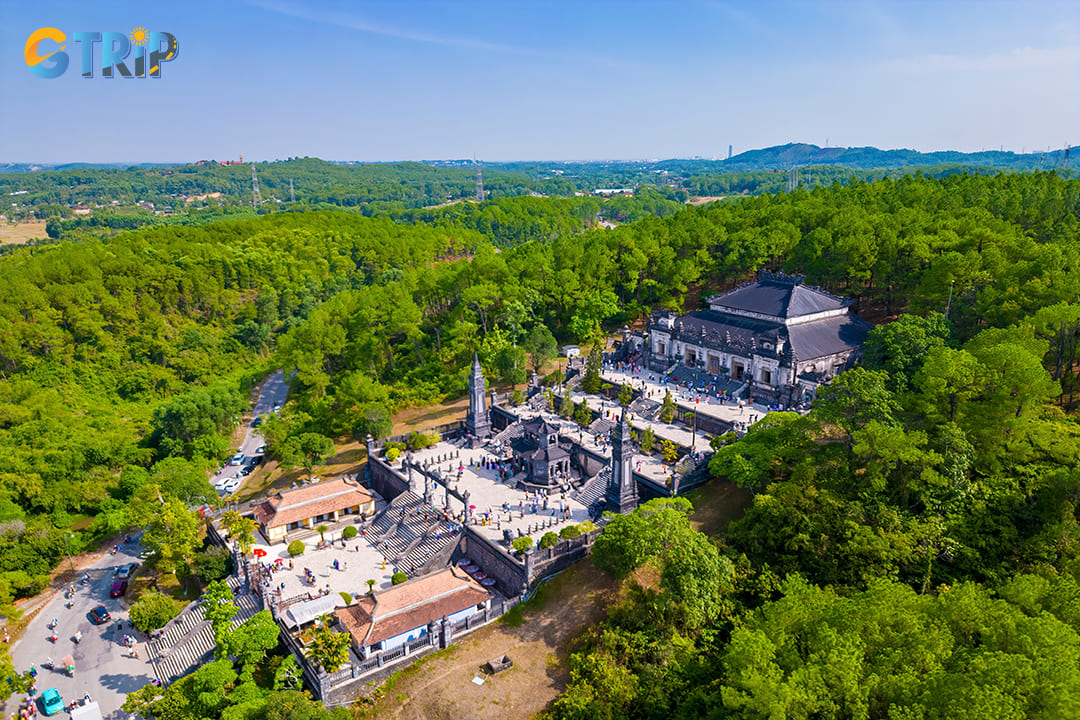
Khai Dinh Tomb can become more crowded during the peak tourist season in the summer
How to get to Khai Dinh Tomb?
To visit Khai Dinh Tomb, travelers can easily find their way from the Hue City center, which is approximately 10 kilometers away. The tomb is one of the most remarkable historical landmarks in the region, and there are several transport options available for tourists:
- Motorbike
Renting a motorbike in Hue is a popular and convenient way to get to Khai Dinh Tomb. With a motorbike, you can enjoy the scenic drive through the countryside, taking in the beauty of the surrounding landscapes. The ride takes around 20 - 30 minutes, depending on traffic. Be sure to check out the map to ensure you’re headed in the right direction. The Khai Dinh Tomb location is well-signposted, making it easy to follow.
- Taxi
For those who prefer a more comfortable ride, taxis are readily available throughout Hue. A taxi ride to Khai Dinh Tomb will cost around 150,000 VND and take approximately 20 minutes from the city center. If you’re staying at a hotel in Hue, many hotels offer taxi services and can help you arrange your transportation.
- Transport from guided tours
For tourists looking to learn more about the history and significance of Khai Dinh Tomb, joining a guided tour is an excellent option. Many local travel agencies in Hue offer Khai Dinh Tomb travel guides. These tours provide detailed insights into the history, architecture, and significance of the tomb, making your visit even more enriching. Guided tours typically include transportation and a knowledgeable guide to explain the historical context of the site.
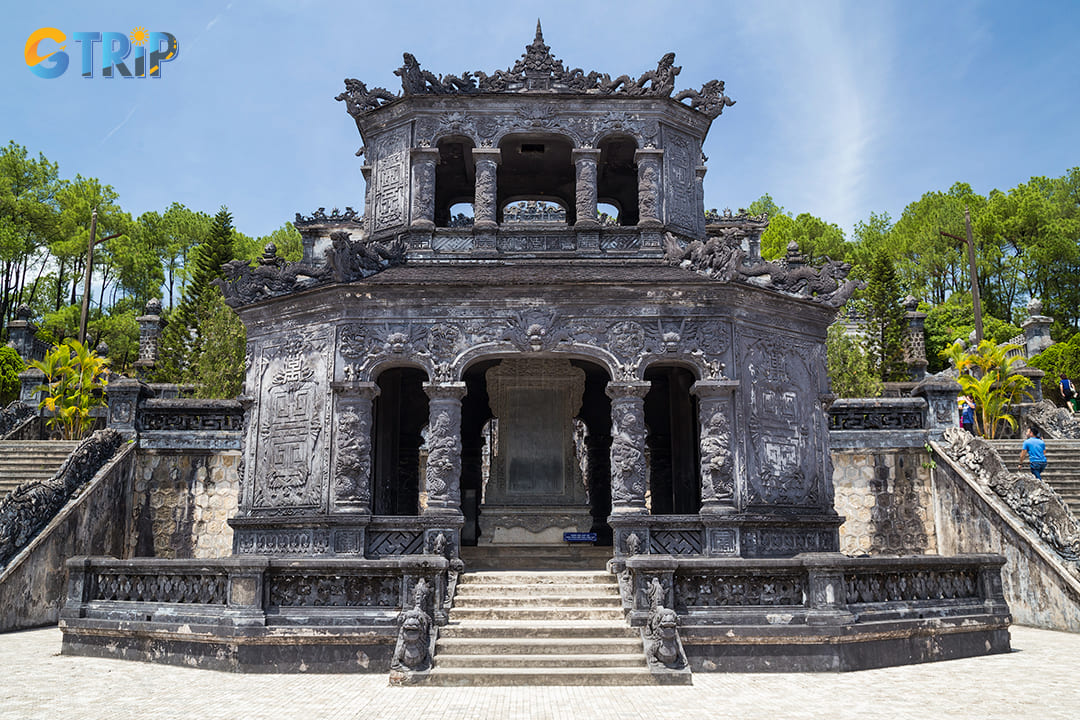
To visit Khai Dinh Tomb, travelers can easily find their way from the Hue City center
Nearby attractions to visit after Khai Dinh Tomb
Exploring Hue imperial tombs doesn’t end at Khai Dinh Tomb, several other significant historical sites nearby offer deeper insight into Vietnam’s royal heritage. These locations showcase distinct architectural styles and provide a broader perspective on the Nguyen dynasty mausoleums.
Minh Mang Tomb - A symbol of harmony and strength
Among the most remarkable Hue imperial tombs, Minh Mang Tomb stands out for its balance between nature and architecture. Situated about 12 km from Khai Dinh Tomb, this site reflects Emperor Minh Mang’s vision of power and order, with symmetrical layouts, serene lakes, and lush gardens. The tomb consists of 40 structures, including palaces, temples, and pavilions, all meticulously aligned along a single axis to symbolize cosmic harmony.
Walking through the elaborate Three-Door Gate (Tam Quan) and crossing the elegant bridges over Trung Minh Lake, tourists experience an atmosphere of reverence and tranquility. The tomb’s central chamber, Sung An Palace, houses the emperor’s altar, adorned with intricate carvings that depict Confucian ideals and imperial authority.
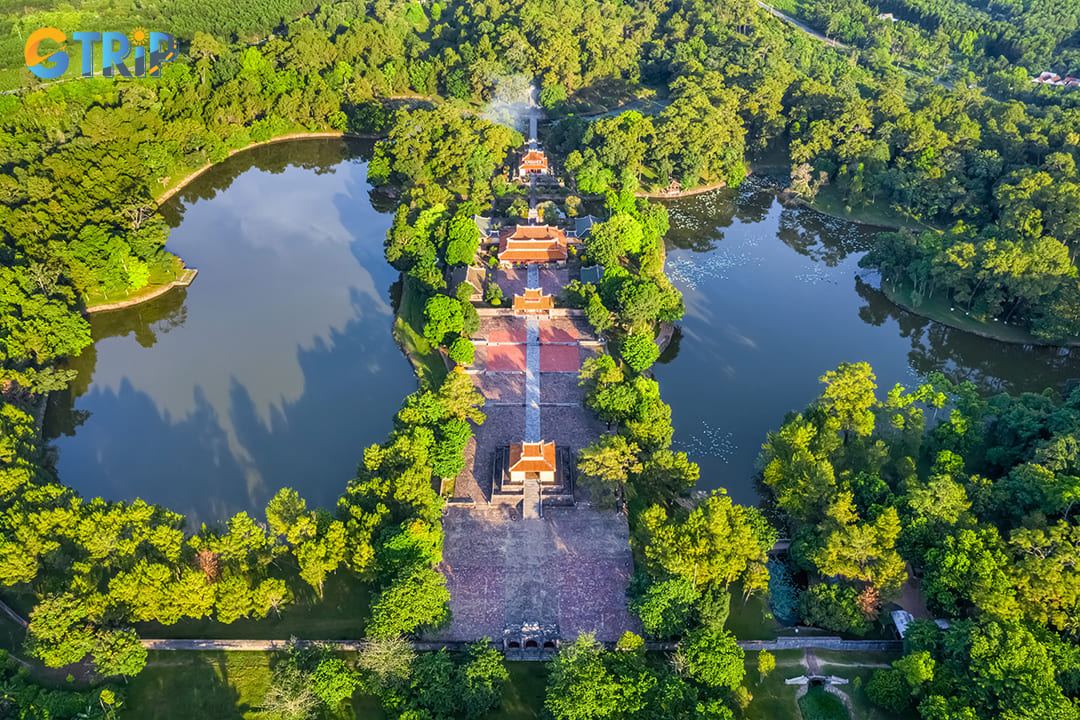
Minh Mang Tomb stands out for its balance between nature and architecture
Thien Mu Pagoda - A spiritual landmark overlooking the Perfume River
Just a short drive from Khai Dinh Tomb, Thien Mu Pagoda is one of Hue’s most revered religious sites. Perched on Ha Khe Hill, this iconic seven-story pagoda is deeply intertwined with the history of Vietnamese Buddhism. Built in 1601, the temple complex includes the Phuoc Duyen Tower, a striking structure visible from afar, and the Dai Hung Shrine, where you can admire ancient statues and relics.
Apart from its religious significance, Thien Mu Pagoda played a role in Vietnam’s modern history as it became a center for Buddhist activism during the 1960s. You can see the Austin car used by Thich Quang Duc, the monk who self-immolated in protest against religious persecution. The tranquil setting along the Perfume River makes it an ideal stop for those seeking both historical insight and scenic beauty.
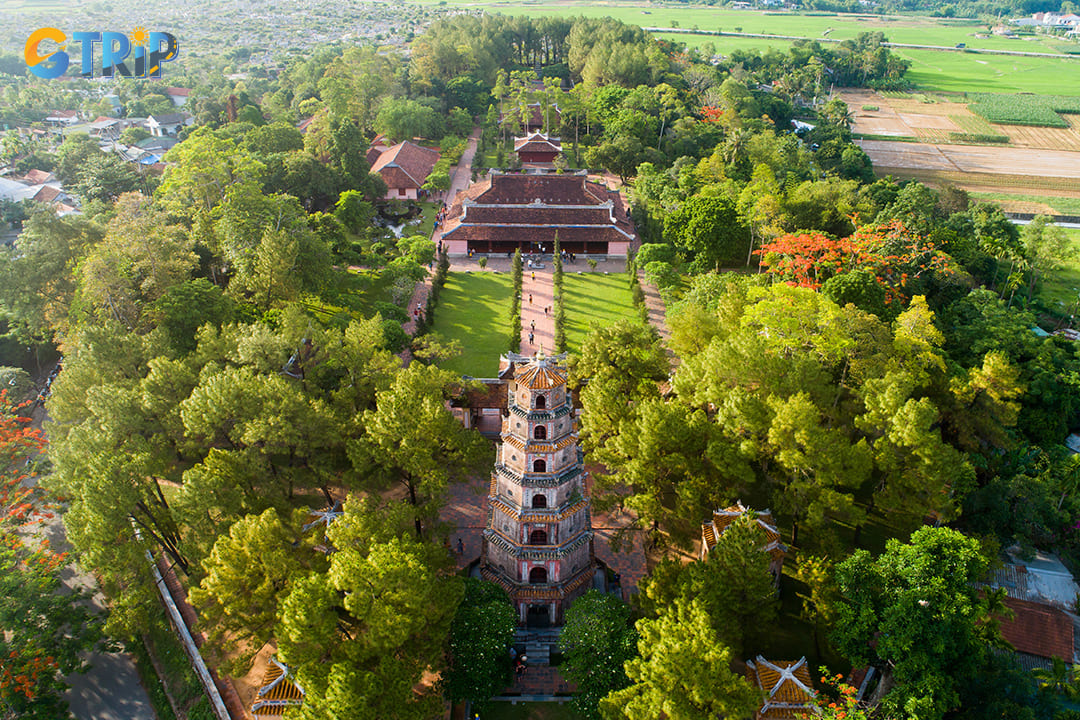
Thien Mu Pagoda is one of Hue’s most revered religious sites
Travel tips for visiting Khai Dinh Tomb
When planning your visit to Khai Dinh Tomb, keeping a few key travel tips in mind can enhance your experience while ensuring a smooth and respectful trip.
- Guided tours: Offer historical insights and may include other famous sites in Hue.
- Dress modestly: Shoulders and knees should be covered to respect local customs.
- Maintain a respectful tone: Keep noise levels low, as this is a sacred site.
- Follow local etiquette: Avoid touching statues or decorations inside the tomb.
- Avoid peak hours: Mid-mornings (10 AM - 12 PM) tend to be the busiest.
- Cash payment: Entrance tickets are typically paid in cash, so bring Vietnamese dong.
- Local snacks: Try traditional Hue food at nearby markets after your visit.
- Visit on a weekday: Fewer crowds compared to weekends and holidays.
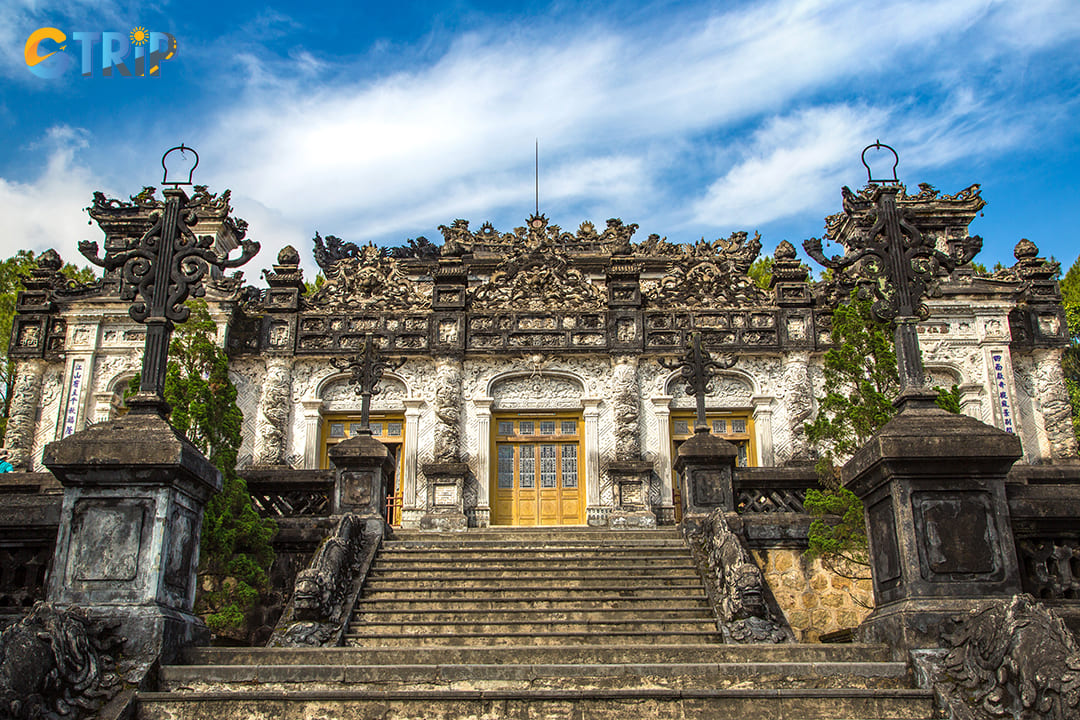
When planning your visit to Khai Dinh Tomb, keeping a few key travel tips in mind can enhance your experience
Khai Dinh Tomb stands as a remarkable representation of Nguyen dynasty royal tombs, blending Vietnamese, French, and Chinese influences into an architectural masterpiece. Visiting this site offers a deeper understanding of Vietnam’s imperial legacy. Plan your visit carefully to make the most of its unique architecture and serene surroundings. For travelers looking to explore beyond Hue, Vietnam’s capital offers a diverse mix of history, culture, and local experiences. If you’re planning a trip to Northern Vietnam, check out our curated tours for an unforgettable journey through ancient temples, bustling markets, and rich culinary traditions. GTrip - Vietnam Travel Agency is here to help you craft the perfect itinerary.

